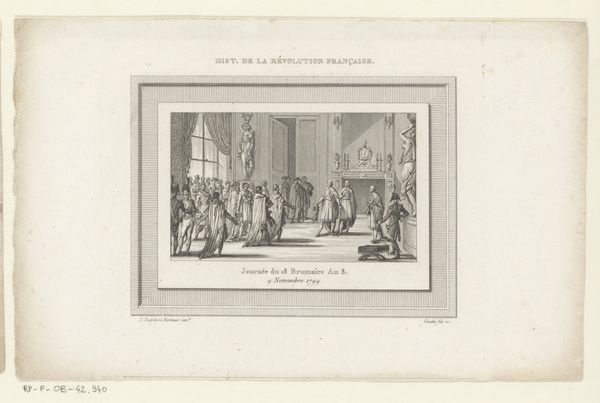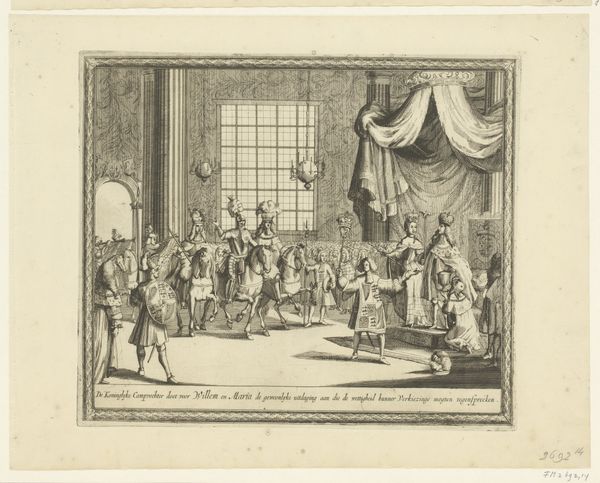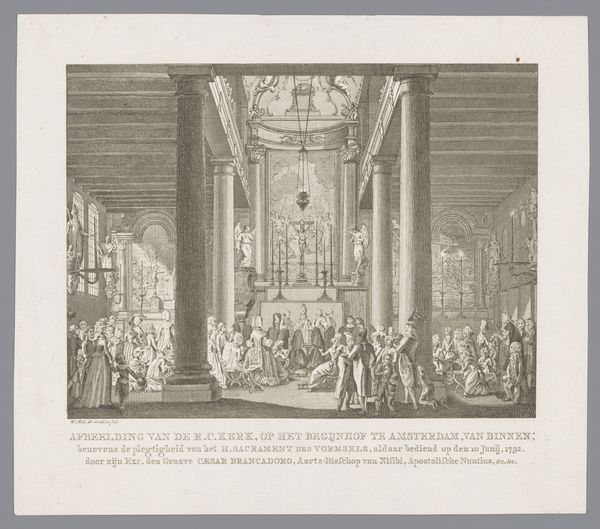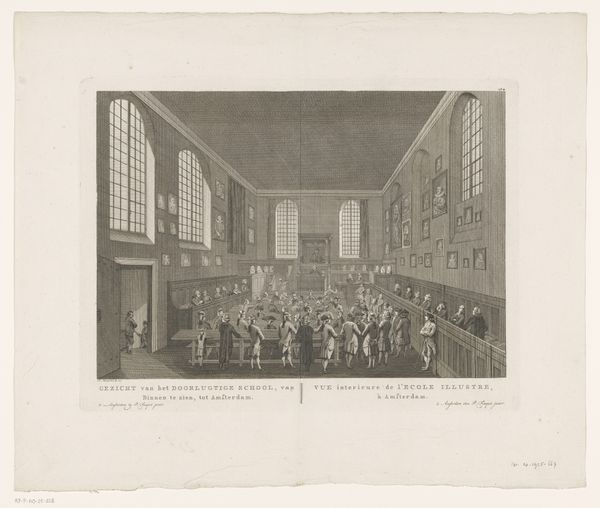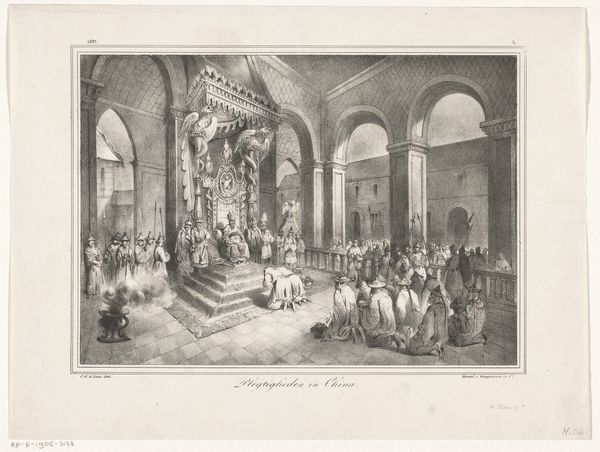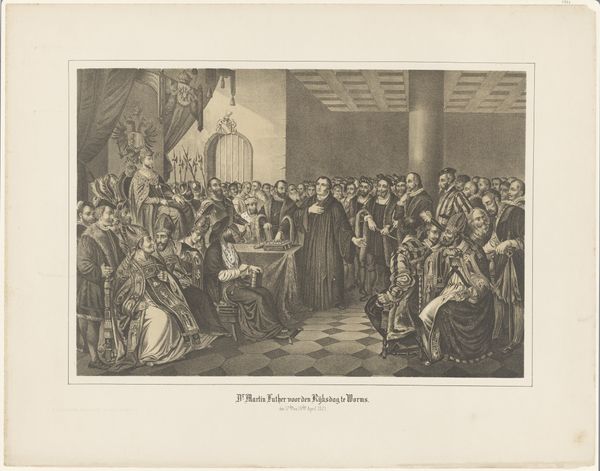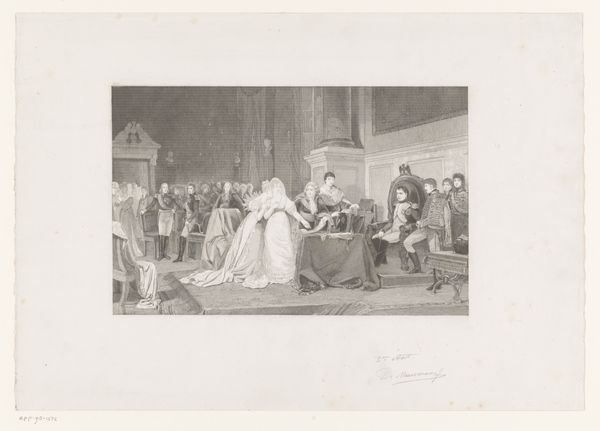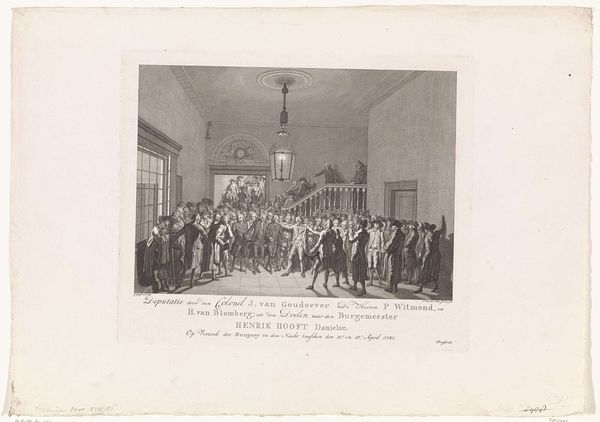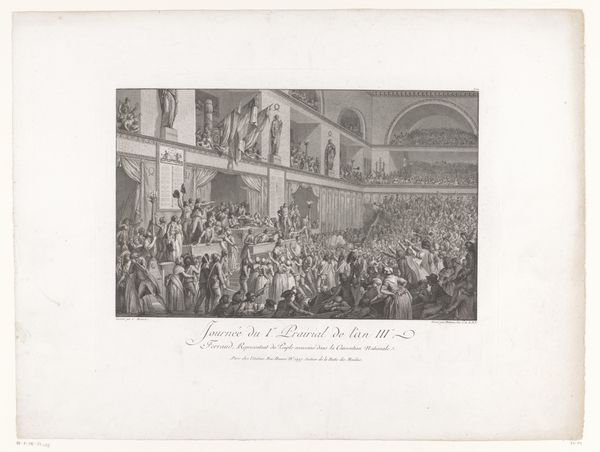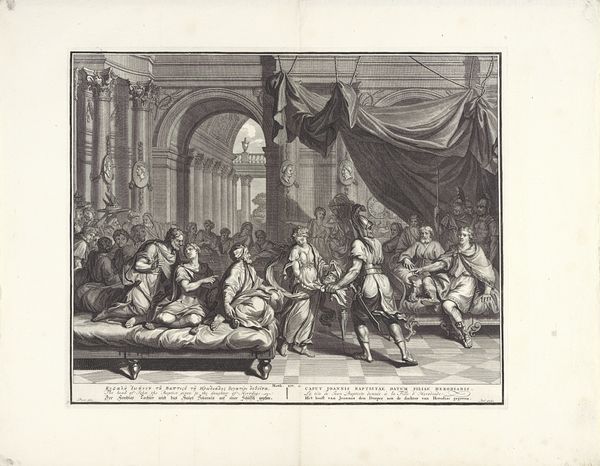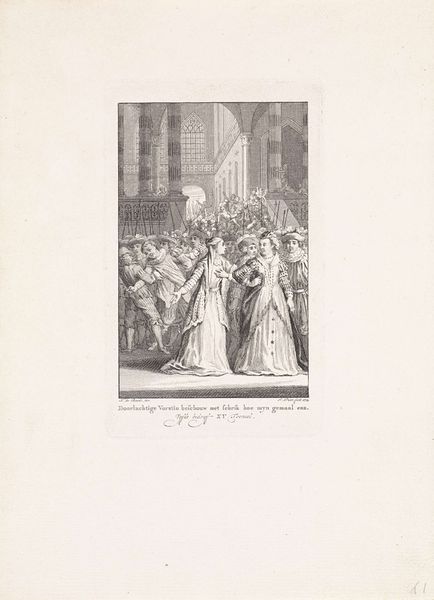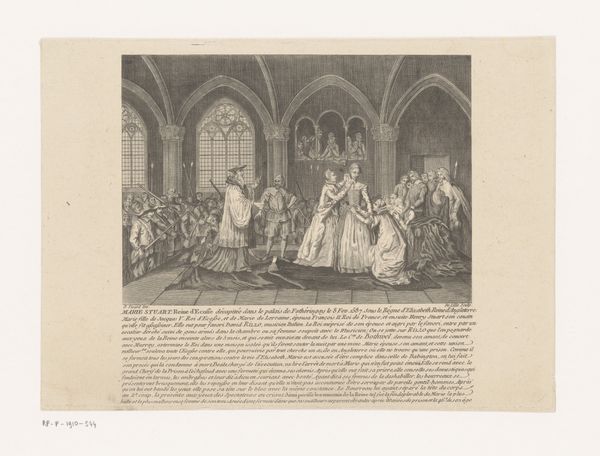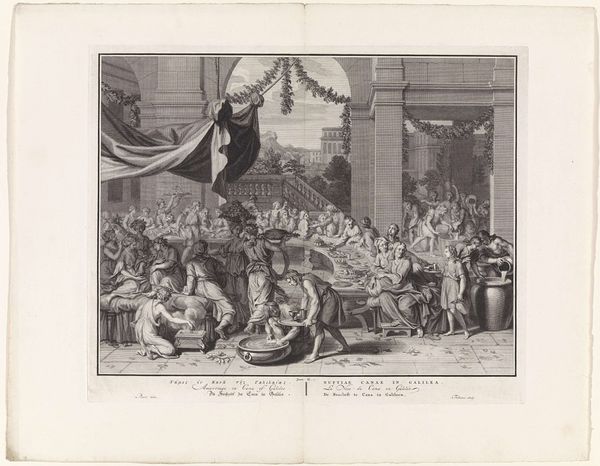
print, engraving
#
neoclacissism
#
narrative-art
# print
#
old engraving style
#
cityscape
#
history-painting
#
engraving
Dimensions: height 338 mm, width 470 mm
Copyright: Rijks Museum: Open Domain
Editor: This engraving by Isidore-Stanislas Helman, created in 1800, is titled "Staatsgreep van 18 Brumaire," and it depicts a scene from the French Revolution. What strikes me first is the sheer busyness of the composition, a stark contrast to the Neoclassical architectural setting. How do you interpret the arrangement of forms in this work? Curator: Indeed. The tension arises from the interplay between the subject matter and the artistic language used. Notice how the crisp lines of the engraving lend themselves to a sense of order, mirroring the intended 'rationality' of Neoclassicism. But against that, you have the chaotic throng of figures engaged in what appears to be a very turbulent moment. Editor: That’s a fascinating contrast. So the medium itself – engraving – is almost at odds with the chaos of the scene. The precision feels like an attempt to control the narrative, perhaps? Curator: Precisely. The use of hatching and cross-hatching creates subtle gradations of light and shadow, but the values are intentionally restrained, refusing high drama in favour of a detached observation. Look at the calculated arrangement of bodies. Where does your eye go? Editor: I am drawn towards the center, towards the raised platform where there’s a cluster of activity and gesture. But the large windows in the background draw the eye outward. Curator: Notice how the orthogonals of those windows compete with the implied diagonals of the gesticulating arms and jostling figures. The composition uses contrast between a rigid framework and the subject matter’s frenzy. Is there a suggestion here, perhaps, that revolutionary ideals can become, inevitably, bound within and limited by an underlying and imposed order? Editor: I see what you mean. It’s as though the artist is using form to comment on the limitations of revolution itself. Thank you, I see this artwork so differently now. Curator: Indeed. The form becomes inseparable from the thematic expression, yielding a multi-layered experience of meaning-making.
Comments
No comments
Be the first to comment and join the conversation on the ultimate creative platform.
